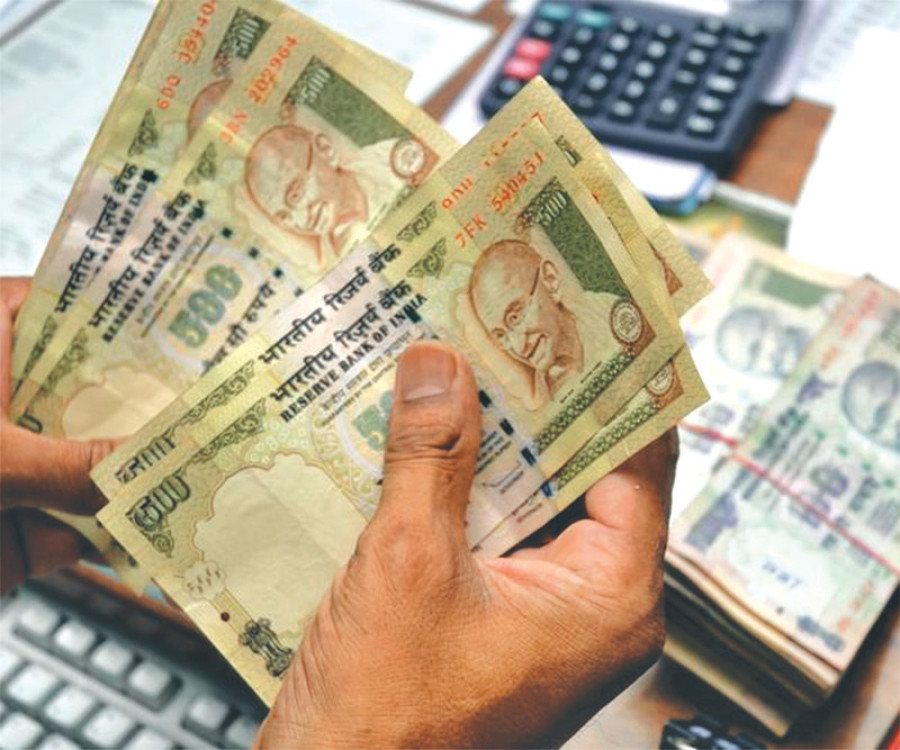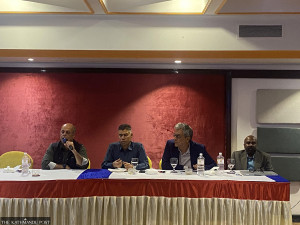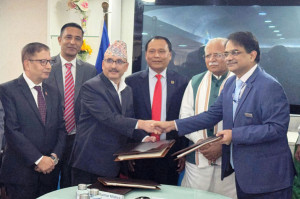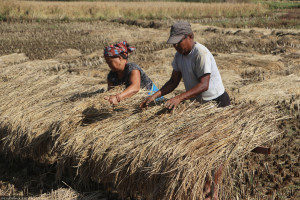Money
India delays process of exchanging banned banknotes
It has been more than 10 days since the Nepal Rastra Bank (NRB) formally sought the Indian central bank’s permission to initiate the process of providing exchange facility to Nepalis possessing demonitised 500- and 1,000-rupee Indian banknotes.
It has been more than 10 days since the Nepal Rastra Bank (NRB) formally sought the Indian central bank’s permission to initiate the process of providing exchange facility to Nepalis possessing demonitised 500- and 1,000-rupee Indian banknotes.
While thousands of people here are waiting to replace the now-defunct currency with legal tenders, the Reserve Bank of India (RBI) has not responded till date.
The NRB had sought RBI’s permission to commence the process of exchanging demonetised Indian banknotes worth up to IRs4,500 per individual as proposed by the Indian central bank.
“We had sent a letter to the RBI on April 13 seeking their go-ahead to start collecting the now defunct Indian banknotes. But we have not heard from them,” said Bhisma Raj Dhungana, head of the Foreign Exchange Management Department at the NRB.
During a meeting held in Nepal in March, RBI officials had proposed to allow Nepalis to exchange demonetised Indian banknotes worth up to IRs4,500 per individual. At that time, NRB officials had declined the offer and demanded that the ceiling be raised to IRs25,000 per person.
As both sides declined to budge from their stance, the meeting had ended inconclusively. Later, the NRB had written to the Ministry of Finance seeking advice. The Finance Ministry told the NRB to provide exchange facility for up to IRs4,500 per individual as proposed by India, but continue pushing Indian authorities to raise the ceiling beyond that threshold.
The NRB subsequently wrote to the RBI based on the Finance Ministry instruction.
“We don’t know what is causing the delay,” Dhungana said.
Once the RBI allows the NRB to provide exchange facility, the NRB will issue a public notice, calling on everyone to deposit the banned currency in banking institutions.
Earlier, the NRB had said it had prepared a software to keep database of people seeking the exchange facility; serial number of bills of IRs500 and IRs1,000 submitted by these people; and their identification numbers.
The Indian government, in a surprise move on November 8, pulled IRs500 and IRs1,000 out of circulation “to unearth unaccounted wealth and fight corruption”. Since then, the NRB has also banned use of those notes in Nepal.
The Nepali central bank had allowed Nepalis to carry Indian banknotes of 500- and 1,000-rupee denominations based on the Indian government’s decision.
The Reserve Bank of India, in February 2015, introduced a new Foreign Exchange Management (export and import of currency) Regulations, allowing Nepali and Bhutanese citizens to “carry Reserve Bank of India currency notes of denomination IRs500 and/or IRs1,000 up to a limit of IRs25,000”.
The NRB has said IRs78.5 million in the denominations of 500 and 1,000 is within the financial system in Nepal. The figure includes cash parked at vaults of banks, financial institutions and the NRB. Previously, the NRB had estimated the amount to hover around IRs33.6 million.
But actual stock of banned Indian bank notes is expected to be much higher because Nepalis were previously allowed to carry Indian 500- and 1,000-rupee bank notes worth up to IRs25,000.
Also, those residing in areas bordering India usually stash Indian notes of larger denominations as they have to frequent Indian markets to buy goods.




 23.12°C Kathmandu
23.12°C Kathmandu












